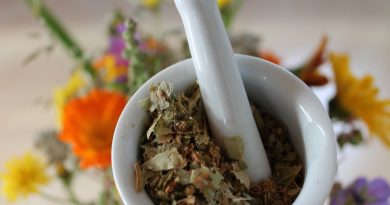Unraveling the Mysteries of Mad Honey: A Journey into its Origins and Production
In the western world, deli bal or grayanotoxin honey is simply known as Mad honey. Although the name sounds like a branding gimmick, mad honey is actually a fascinating and enigmatic variety of honey that has captured the curiosity of people around the world.
With its intoxicating effects and potential health benefits, mad honey presents a captivating subject of exploration. In this article, we embark on a journey to unravel the mysteries of mad honey, delving into its origins and the intriguing process of its production.
Contents [hide]
The Origins of Mad Honey
Mad honey finds its roots in specific regions where certain plants of the Rhododendron genus flourish. Nepal, Turkey, and the Black Sea region are renowned for the presence of these unique plants, such as Rhododendron ponticum and Rhododendron luteum. These plants contain grayanotoxins, the key component responsible for the intoxicating properties of mad honey.
The Grayanotoxin Effect
Grayanotoxins are naturally occurring neurotoxins found in the nectar of Rhododendron plants. When bees collect the nectar and convert it into honey, these toxins are preserved. The consumption of mad honey leads to the grayanotoxin effect, which affects the central nervous system.
This phenomenon manifests as a range of symptoms, including dizziness, nausea, vomiting, low blood pressure, irregular heartbeat, excessive sweating, hallucinations, and, in extreme cases, loss of consciousness or even death. If you’re curious or just want to try something exotic, several legit sources have Mad Honey for Sale online, meaning you can taste this unique variety of honey wherever you are.
Traditional Use and Cultural Significance
Mad honey has a rich history of traditional use, deeply rooted in the cultural practices of the regions where it is found. Local communities have utilized it for medicinal purposes, treating ailments such as digestive disorders, hypertension, and sexual dysfunction. Moreover, it has played a role in religious ceremonies and cultural rituals, often symbolizing fertility or serving as an offering to deities.
Historical Significance
Mad honey has a history that stretches back centuries. In ancient times, it was mentioned in Greek mythology, specifically in the story of the honey-induced stupor of the army of Xenophon during the Battle of Trebizond in 401 BCE. This historical event emphasized the potency and effects of mad honey, showcasing its ability to impact large groups of people.
The Intricate Process of Production
The production of mad honey involves a unique and meticulous process. Beekeepers carefully select beehive locations near the Rhododendron plants, ensuring the bees have access to their nectar. The bees then collect the nectar and return to the hive, where they convert it into honey.
The grayanotoxins present in the nectar are retained in the honey, rendering it “mad.” Beekeepers must exercise caution during the collection process to ensure the honey remains pure and uncontaminated.
Health Benefits or Risks?
While mad honey has been attributed with various health benefits, it is crucial to approach these claims with caution. The alleged medicinal properties, such as its use in treating specific ailments, have been passed down through generations.
However, scientific research on mad honey is limited, and there is insufficient evidence to support these claims. It is important to consider the potential risks associated with mad honey consumption, especially in larger quantities, which can lead to severe intoxication and adverse health effects.
Conclusion
Unraveling the mysteries of mad honey takes us on a captivating journey into its origins and production. Originating from specific regions where Rhododendron plants thrive, mad honey holds a special place in the cultural and medicinal practices of these areas. The process of producing mad honey is intricate, requiring careful selection and collection of the nectar.
While the allure of its potential health benefits exists, it is essential to acknowledge the associated risks and exercise caution when considering the consumption of mad honey. As we continue to explore and understand the complexities of this unique honey, the mysteries surrounding it only deepen, beckoning us to further investigate its fascinating properties.




